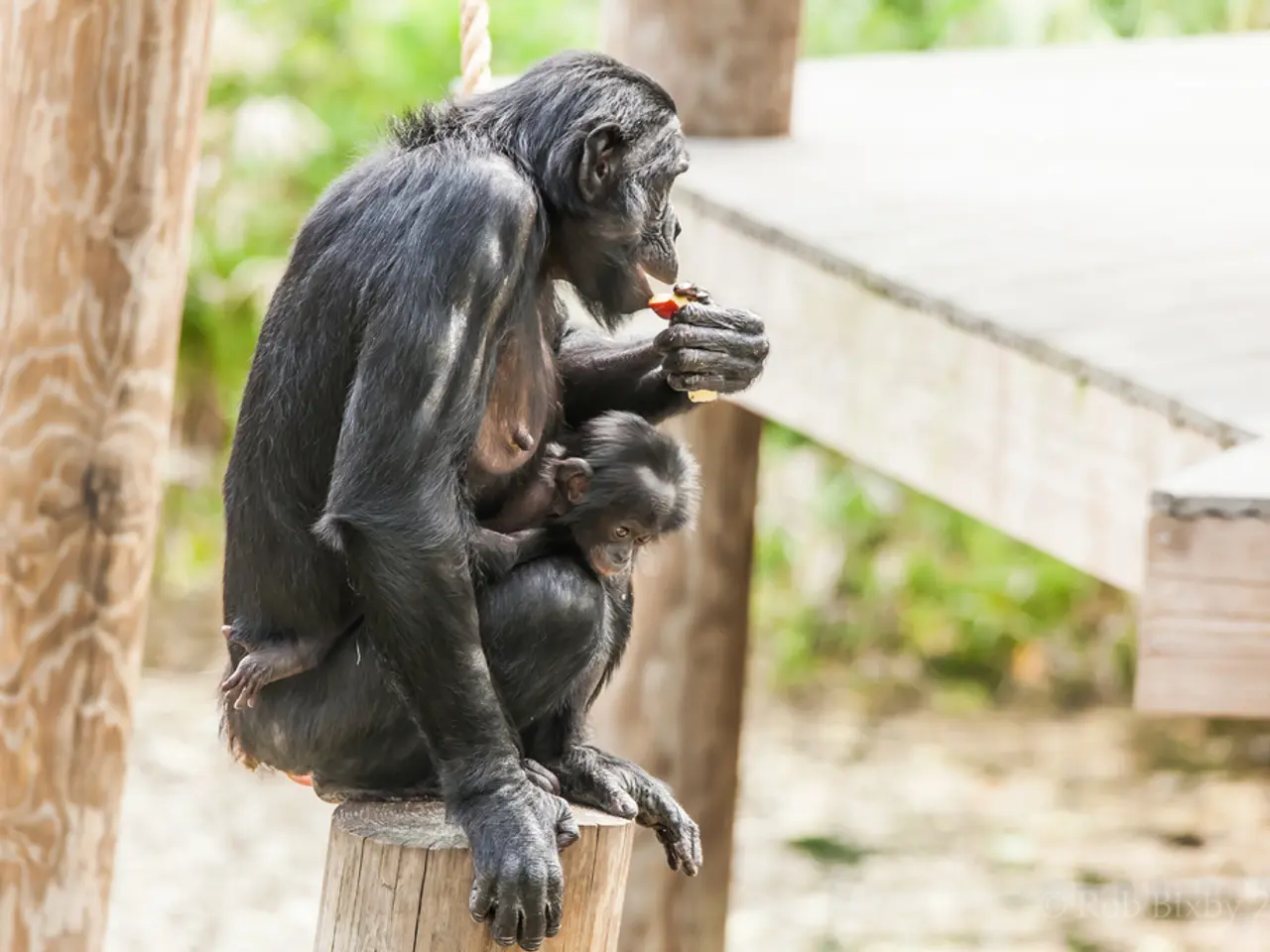Chimpanzee in Gombe National Park, Tanzania, consumes a red colobus monkey.
In the dense rainforests and mountainous terrain of Gombe National Park, Tanzania, a team of researchers, led by anthropologist Ian Gilby from Arizona State University, have been studying the feeding habits of various species, including chimpanzees, baboons, vervet monkeys, and red colobus monkeys. Understanding these feeding behaviours provides valuable insights into early hominid evolution, revealing patterns of foraging, diet selection, and environmental adaptation in primates closely related to humans.
Gilby's study, recently published in the International Journal of Primatology, focused on the consumption of meat by chimpanzees. The findings suggest that the species that led to early hominids may have started eating more meat.
According to Gilby, chimpanzees often prefer nutrient-rich organs like livers when killing adult monkeys, starting with these organs first. However, when it comes to subadult prey (infants, juveniles, and adolescents), chimps tend to eat their heads first. This pattern is also observed among chimpanzees studied by Dr. Pruetz at the Fongoli Savanna Chimpanzee Project in Senegal, where Pruetz has even observed chimps consuming bushbabies' heads first.
However, the reasons behind these preferences remain a topic of debate. Pruetz supports the idea that chimps are seeking nutrition but admits it can't explain all differences across study sites. Gilby thinks the preference for a particular body part first has to do with nutrition, but Pruetz suspects cultural traditions and learned traditions among populations may be more at play.
In Gombe, Pruetz notes that the chimps sometimes target adult monkeys' torsos first, a behaviour not fully understood. Meanwhile, at Fongoli, chimps sometimes give away heads and discard guts when preying on baboons. These variations in behaviour across different study sites could provide valuable clues about the dietary habits of early hominids.
Pruetz's work in Senegal complements the research in Gombe, allowing for a more comprehensive understanding of chimpanzee hunting behaviours. By comparing these behaviours, researchers can make predictions or hypotheses about how the earliest hominids may have behaved.
The study of meat in the diet of chimpanzees could shed light on human evolution, particularly the shift towards a more meat-based diet. Gilby's study suggests that a need for fat may have been the motivation for early hominids eating more meat. As our understanding of chimpanzee hunting behaviours continues to grow, so too does our understanding of our own evolutionary past.
Read also:
- County Hall's grand display pays tribute to compassionate family members - County administration lauds loving relatives
- Grains of contemporary wheat now offer fewer essential nutrients
- Uncovered: The First Genetic Analysis of Sweet Potatoes Reveals They Originated as Hybrid Species with a Perplexing History and Six Sets of Chromosomes
- Experience the Variety of Wellness Offered by Jasmine Tea




